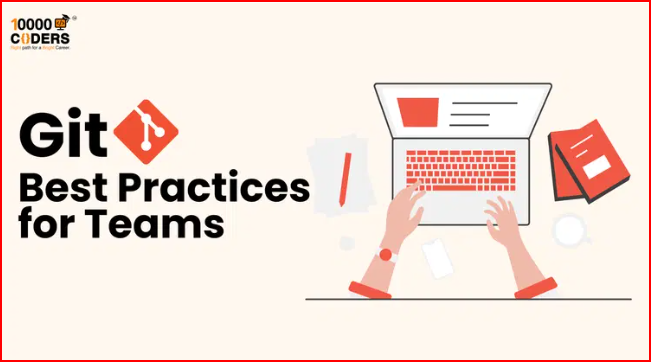Git Best Practices for Teams: A Comprehensive Guide
Learn essential Git practices that will help your team collaborate effectively, maintain code quality, and streamline development workflows.
Understanding Git Workflow
1. Branching Strategy
main
├── develop
│ ├── feature/user-auth
│ ├── feature/payment
│ └── hotfix/security-patch
└── release/v1.0.0
Main Branches
main: Production-ready codedevelop: Integration branch for features
Supporting Branches
feature/*: New featuresbugfix/*: Bug fixeshotfix/*: Urgent production fixesrelease/*: Release preparation
Best Practices
1. Commit Messages
# Good commit message
feat(auth): implement OAuth2 authentication
- Add Google OAuth2 integration
- Implement JWT token handling
- Add user session management
# Bad commit message
fixed stuff and added things
Commit Message Structure
- Type: feat, fix, docs, style, refactor, test, chore
- Scope: Component or feature affected
- Subject: Brief description
- Body: Detailed explanation
- Footer: Breaking changes, issue references
2. Branch Naming
# Feature branches
feature/user-authentication
feature/payment-gateway
# Bug fixes
bugfix/login-error
bugfix/payment-validation
# Hotfixes
hotfix/security-vulnerability
hotfix/critical-error
3. Code Review Process
- Before Review
# Update your branch
git fetch origin
git rebase origin/develop
# Clean up commits
git rebase -i HEAD~3
- Review Checklist
- Code follows style guide
- Tests are included
- Documentation is updated
- No sensitive data
- Performance considered
4. Merge Strategies
1. Merge Commits
git checkout develop
git merge feature/new-feature
2. Rebase and Merge
git checkout feature/new-feature
git rebase develop
git checkout develop
git merge feature/new-feature --ff-only
3. Squash and Merge
git checkout develop
git merge --squash feature/new-feature
git commit -m "feat: implement new feature"
Team Collaboration
1. Pull Request Template
## Description
[Describe your changes]
## Type of Change
- [ ] New feature
- [ ] Bug fix
- [ ] Documentation
- [ ] Performance improvement
## Testing
- [ ] Unit tests added
- [ ] Integration tests added
- [ ] Manual testing completed
## Screenshots
[If applicable]
## Checklist
- [ ] Code follows style guide
- [ ] Documentation updated
- [ ] Tests added/updated
- [ ] All tests passing
2. Code Review Guidelines
- What to Review
- Code quality
- Test coverage
- Documentation
- Security concerns
- Performance impact
- How to Review
- Be constructive
- Explain reasoning
- Suggest alternatives
- Check for edge cases
3. Conflict Resolution
# When conflicts occur
git fetch origin
git rebase origin/develop
# Resolve conflicts in files
git add <resolved-files>
git rebase --continue
# If rebase gets complicated
git rebase --abort
Advanced Practices
1. Git Hooks
# pre-commit hook
#!/bin/sh
npm run lint
npm run test
# commit-msg hook
#!/bin/sh
npx commitlint --edit $1
2. Git Aliases
# Add to .gitconfig
[alias]
st = status
co = checkout
br = branch
ci = commit
unstage = reset HEAD --
last = log -1 HEAD
3. Git Workflow Automation
# .github/workflows/pr.yml
name: Pull Request Checks
on: [pull_request]
jobs:
lint:
runs-on: ubuntu-latest
steps:
- uses: actions/checkout@v2
- name: Run linter
run: npm run lint
Security Best Practices
1. Sensitive Data
# .gitignore
.env
*.pem
config/secrets.yml
2. Access Control
- Branch Protection
- Require reviews
- Require status checks
- Require signed commits
- Key Management
- Use SSH keys
- Rotate keys regularly
- Use deploy keys
Performance Optimization
1. Repository Size
# Clean up repository
git gc
git prune
git repack -a -d --depth=250 --window=250
2. Large File Handling
# Use Git LFS
git lfs install
git lfs track "*.psd"
git lfs track "*.zip"
Common Issues and Solutions
1. Accidental Commits
# Remove last commit
git reset --soft HEAD~1
# Remove file from commit
git reset HEAD~1 <file>
git checkout -- <file>
2. Lost Changes
# Recover lost commits
git reflog
git checkout <commit-hash>
# Recover stashed changes
git stash list
git stash apply stash@{0}
Team Communication
1. Git Commit Etiquette
- Write clear commit messages
- Keep commits focused
- Reference issues/tickets
- Use conventional commits
2. Pull Request Communication
- Be clear about changes
- Respond to feedback
- Keep discussions focused
- Use @mentions appropriately
Tools and Resources
1. Essential Tools
- Git GUI clients
- Code review tools
- CI/CD integration
- Git hooks
2. Learning Resources
- Git documentation
- Team training
- Best practices guides
- Community forums
Conclusion
Effective Git practices are crucial for team collaboration. Remember:
- Follow consistent workflows
- Write clear commit messages
- Review code thoroughly
- Keep security in mind
- Use automation tools
Next Steps
- Implement these practices
- Train team members
- Set up automation
- Monitor effectiveness
- Iterate and improve
Resources
Citations
🚀 Ready to kickstart your tech career?





Comments